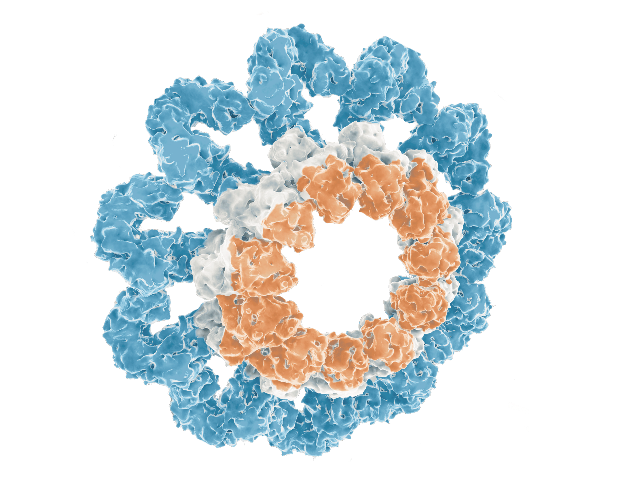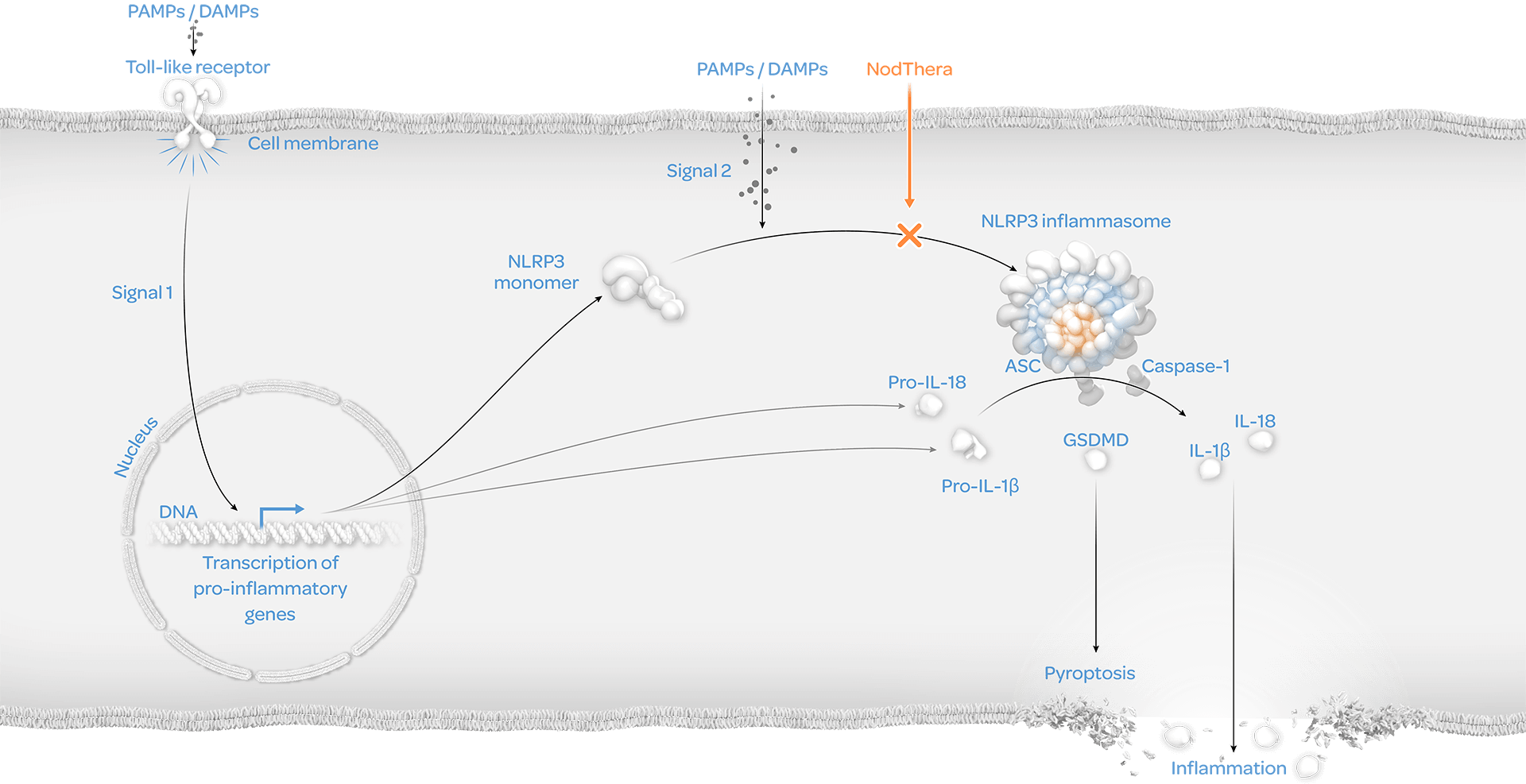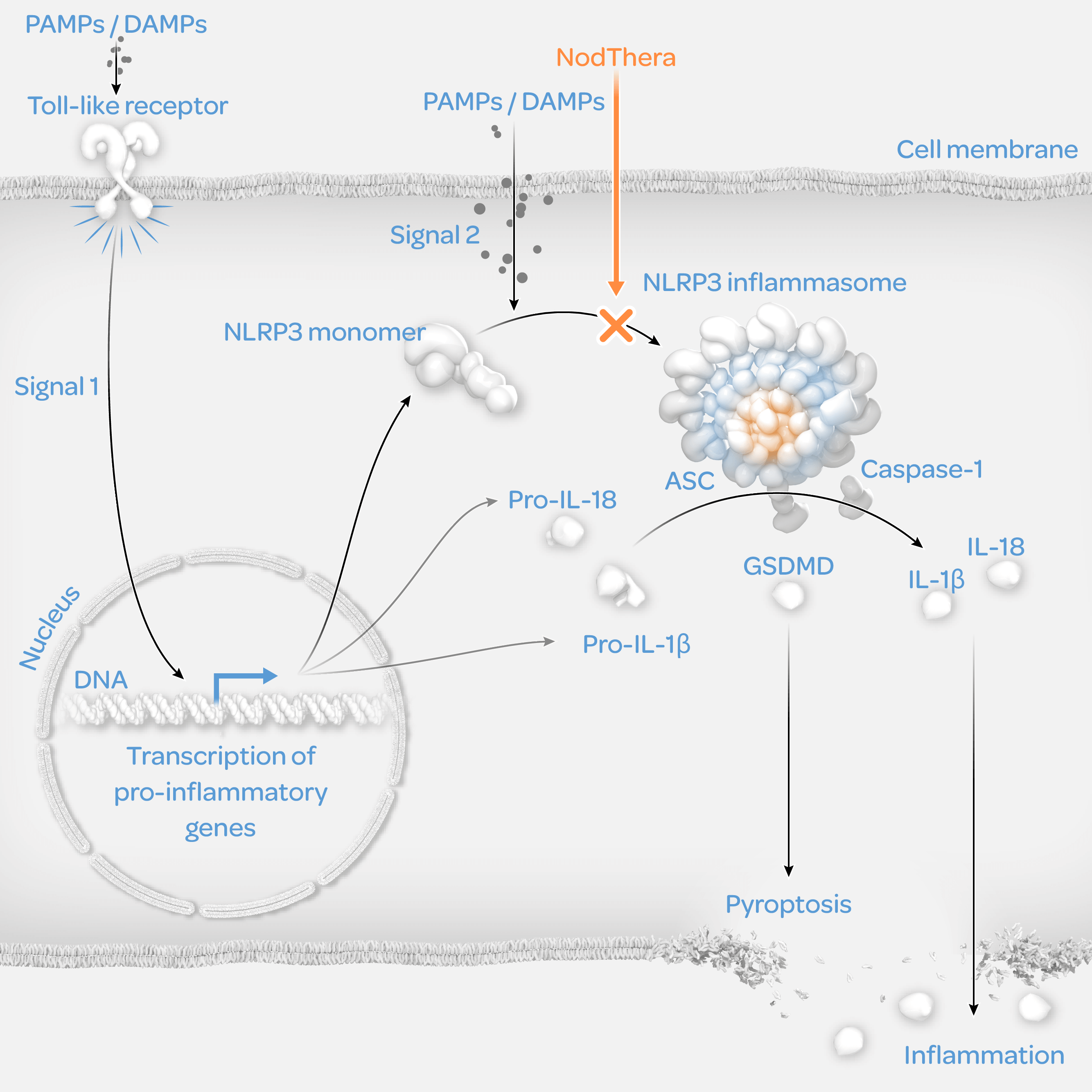

From downstream
to upstream –
moving beyond IL-1ß
Inflammation is a crucial biological response of our immune system that protects us against disease – yet it can also become persistent and over-exaggerated, leading to the development of a wide range of chronic inflammatory diseases.
The increase in pro-inflammatory cytokines IL-1β and IL-18 resulting from NLRP3 inflammasome activation contribute greatly to disease-causing inflammation– and, as a result, have been studied extensively as therapeutic targets. Yet the benefits of today’s biologics that target IL-1β are still offset by notable limitations and tradeoffs.
The increase in pro-inflammatory cytokines IL-1β and IL-18 resulting from NLRP3 inflammasome activation contribute greatly to disease-causing inflammation– and, as a result, have been studied extensively as therapeutic targets. Yet the benefits of today’s biologics that target IL-1β are still offset by notable limitations and tradeoffs.

The NLRP3 inflammasome: one of the most validated targets of our time
Recent scientific breakthroughs have unveiled the NLRP3 inflammasome as a key upstream activator of IL-1β and IL-18 that has been validated as a viable therapeutic target capable of overcoming previous treatment challenges.
Today’s convergence of key insights into NLRP3 biology has brought us to a critical juncture in the treatment of chronic inflammatory disease. The path ahead is illuminated by a rich new world of opportunity for NLRP3-inhibiting therapies that move beyond IL-1β biologics to provide unprecedented treatment benefits.
the body due to their size
approved indications limited to rare diseases
oral pill
the body due to their size
approved indications limited to rare diseases
oral pill
NLRP3 inflammasome assembly


Our approach:
mastery meets innovation
To unlock the potential of NLRP3 inflammasome inhibition means we will be able to deliver viable medicines to millions of patients suffering from chronic inflammatory diseases, including many with currently limited or inadequate treatment options. Success will require an uncompromising focus that combines creativity, experience and mastery of the science at all steps of the process – from discovery through preclinical development to clinical application.
It starts with the chemistry
By combining the precise chemical functionality and properties needed to cross cell membranes, distribute to target tissues in the body and penetrate the blood brain barrier, we are creating differentiated small molecules that can treat chronic peripheral and CNS diseases with significant clinical opportunity and patient impact.
Using novel chemistry, translatable assays and proprietary in-house in vivo models, our approach allows us to model the target cover required for efficacy and the human doses required to achieve this – before drug candidates even enter the clinic.
Drawing upon our clinical expertise, we have a deep understanding for how to design and execute clinical trials using ex vivo blood assays and inflammatory biomarkers.